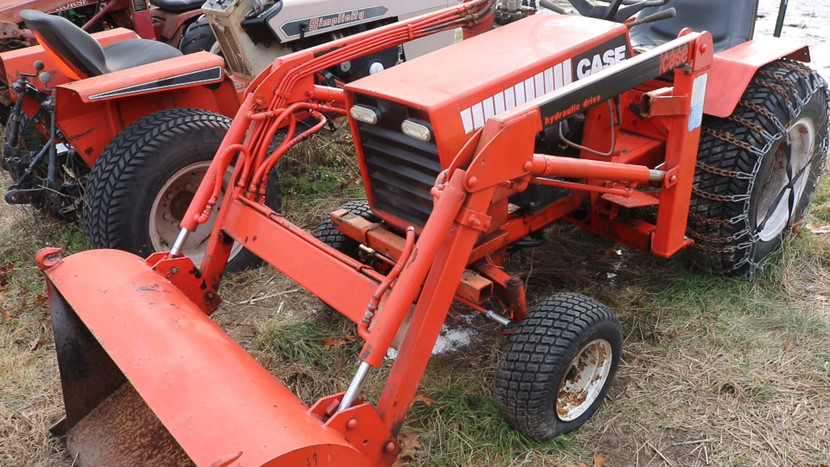Best Vintage Garden Tractor for a Front End Loader
Best Vintage Garden Tractor for Front End Loader
My favorite implement for a vintage garden tractor is the front end loader. To those not familiar with vintage garden tractors, a front end loader may seem more like a toy rather than a tool. The truth is vintage garden tractors are fantastic platforms for small front end loaders. This combination makes for a very capable, compact and inexpensive machine to help you manage your property chores. With a properly set up front end loader, your garden tractor can dig, lift, and carry materials up to 800 pounds in weight and up to 6 feet high. This makes it the perfect tool for the rural property owner, orchard business, equine and livestock farms. I personally use a fleet of Garden Tractor Loaders to manage horse manure, compost, dirt, snow, mulch, and more on my 8-acre farm property in Southern Maine. Their small size makes it so I can navigate small gated areas, and aisles in between outbuildings and other obstacles. The lightweight of my machines (Under 2,000 pounds) allows me to drive my loader tractor anywhere on the property without fear of damaging lawns or pathways.
In this article I am going to explain what to consider when choosing a garden tractor as a platform for a front end loader.
Front End Loader: Buy or Build
There were many manufacturers in the United States that made front end loaders for Garden Tractors from the 1950’s through the 1990’s. Some popular manufacturers were Johnson, Kwik Way, Danco, Ark among others. You can still occasionally find these loaders on internet classifieds such as Craigslist and Facebook Marketplace. The two most likely scenarios you will find are Loaders already attached to tractors, or loaders for a different garden tractor than you own. The options in these cases are to fabricate a custom way to attach the loader to your tractor. This process is not difficult but will require creativity and some fabrication skills.
I prefer to build my own front end loaders. This process can be made easy with pre-engineered plans from P.F. Engineering. They make complete plans for building your own Front End Loader. You can learn more about them here: http://www.loaderplans.com. The process is not difficult. I built my first one with an inexpensive welder, and an angle grinder. I will write a more in depth article on building a front end loader in the future.
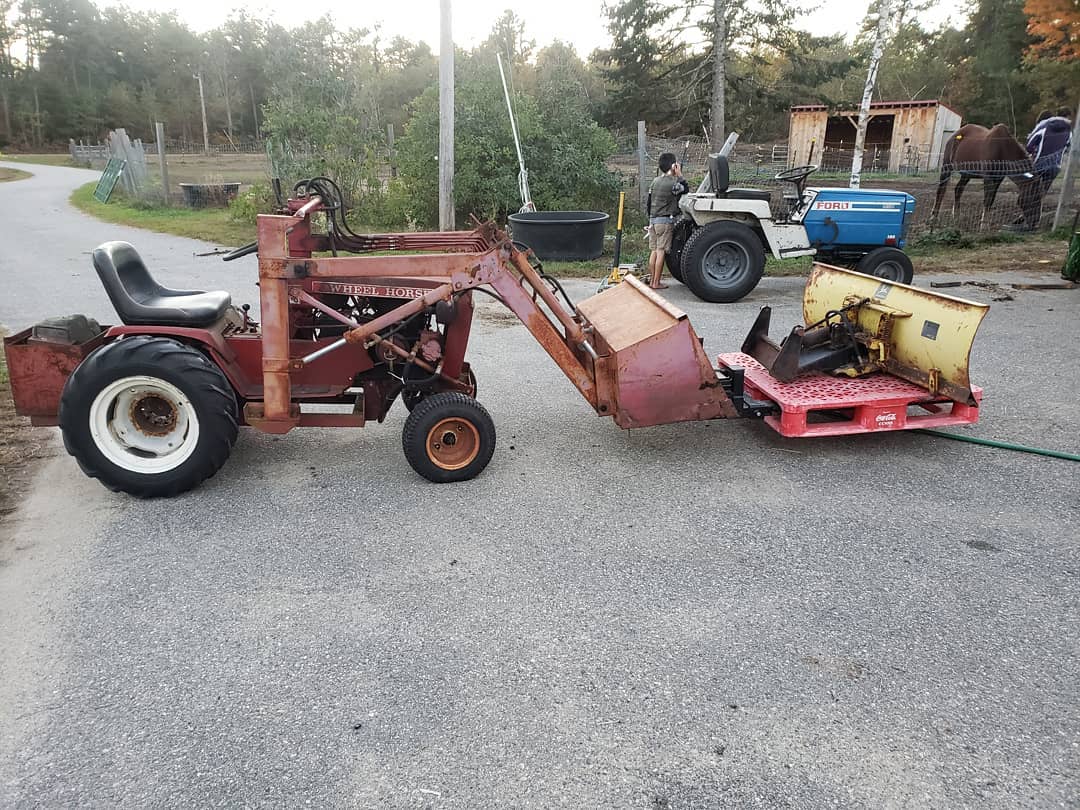
Choosing the Right Garden Tractor
All vintage garden tractors are capable of handling a front end loader. All true garden tractors have engines, front axles, transmissions, and frames that are capable of withstanding the work load from a front end loader. However there are some characteristics that make some tractors better than others. My favorite garden tractors for a front end loader are the Ford LGT 145, 165 and 195 garden tractors. My second favorite are the International Harvester Cub Cadet wide frame tractors such as the Cub Cadet 129, 149, and 169.
Let’s explore four characteristics that make a great garden tractor loader.
Wheel Spindles:
All vintage garden tractors will have at least a ¾” spindle with a wheel supported by 2 ball bearings. This is adequate for a front end loader, but if you want to utilize the full power of your loader you will want to upgrade to a stronger 1” wheel spindle with tapered bearings. You can make your own by using a trailer spindle, hub and bearings. Some garden tractors already have 1” front wheel spindles. Examples are the John Deere 400, Simplicity Powermax, and Ford LGT 195.

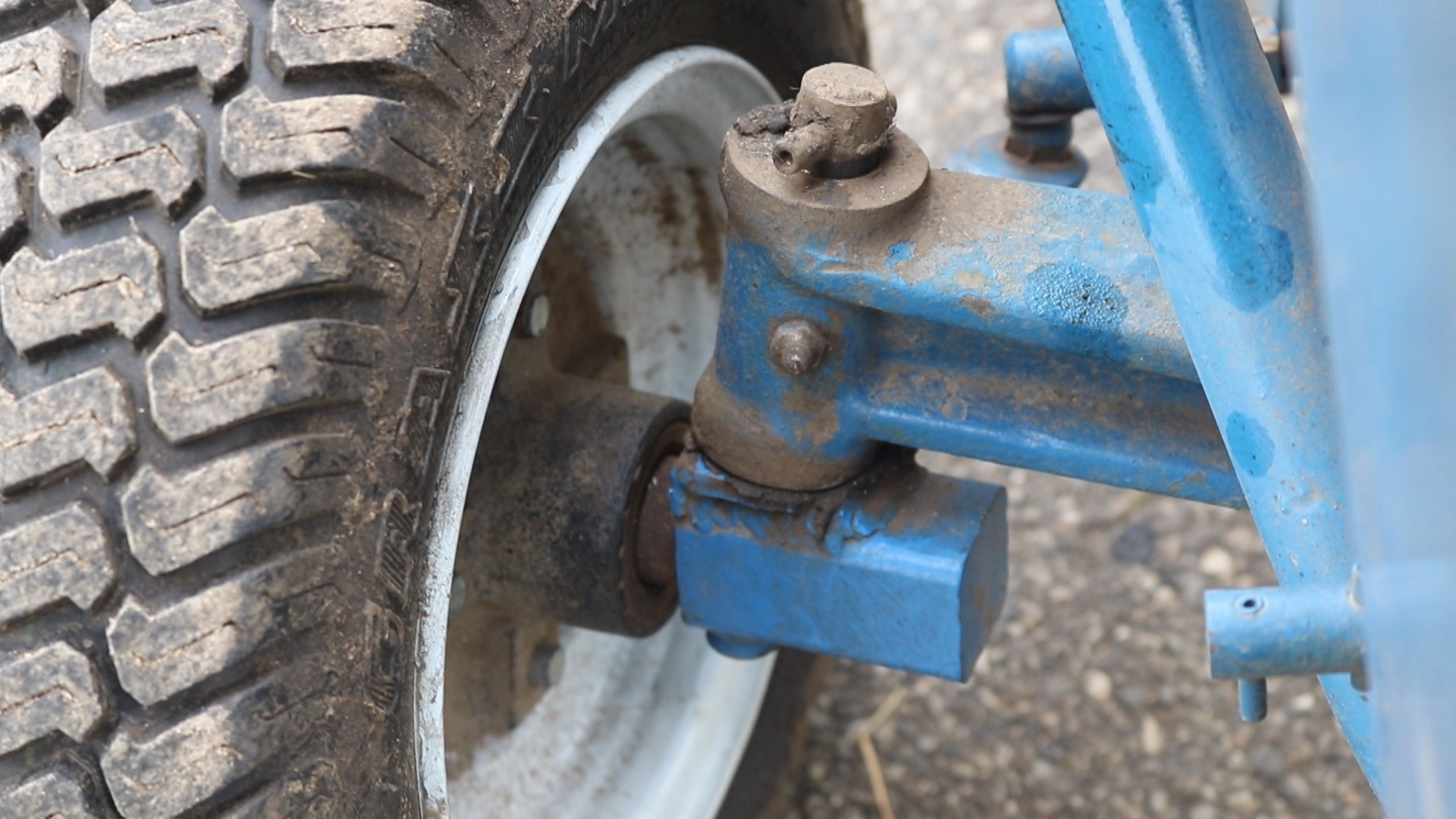
stock spindle trailer spindle upgrade
Frame:
While all of the frames of vintage garden tractors are strong enough to hold a front end loader, some designs are easier to work with than others.
I prefer tractors with large flat frames. John Deere and Cub Cadet both provide a lot of flat, square surface area that you can weld and drill into to create many mounting positions and options for you. Tractors such as Wheel Horse use angle iron frames and are close together. This can make it more difficult to mount components to.
The Ford LGT and Bolens tractors have tube frames, which can make it slightly more challenging to find mounting locations for the front end loader sub frame.
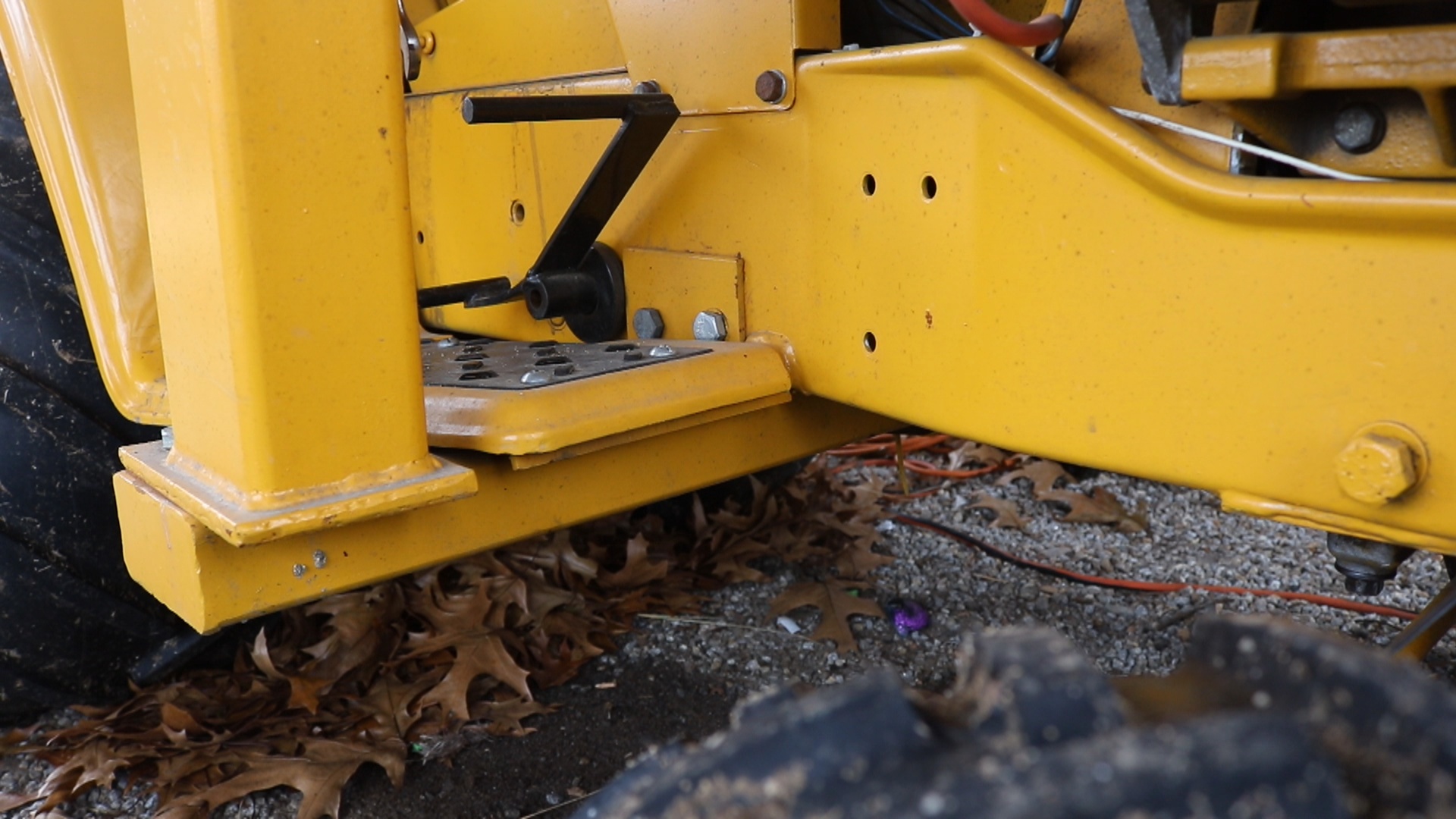 Cub Cadet 149 Frame and loader subframe
Cub Cadet 149 Frame and loader subframe
Transmission:
First, lets classify garden tractor transmissions into 3 interface types.
- Foot Controlled Hydrostatic
- Hand Controlled Hydrostatic
- Mechanical Gear
Foot controlled hydrostatic transmissions can be found on Bolens Large Frame and Ford LGT tractors. These allow you to have both of your hands available to manipulate the loader control valve and the steering wheel while driving. This is particularly useful when doing a lot of back and forth driving like when turning manure piles or moving piles of material from one location to another.
Hand controlled hydrostatic transmissions can be found in most old vintage garden tractors. The John Deere 140, 300 series, and the John Deere 400 use a hand controlled hydrostatic transmission. Cub Cadet and Simplicity also used hand controlled hydrostatic levers. Some of these tractors such as the John Deere 140 and Cub Cadet 149 have a foot pedal you can push to return the hydrostatic lever to neutral. This is useful so if you are using the loader and steering, you can slow down and stop your tractor without using your hands.
Other tractors such as the John Deere 317, 400, Simplicity Sunstar do not have return to neutral pedals. To stop these tractors you have to use one of your hands to return to neutral.
Mechanical gear transmissions are found in Wheel Horse, John Deere, Simplicity, Allis Chalmers, Cub Cadets, Sears and many others. In order to change directions with these transmissions, you must depress a clutch with your foot and then manually shift to a gear. When you release the clutch your tractor will move. With these transmissions you can shift the transmission, and then use both your hands to operate the loader and drive while your foot works the clutch
.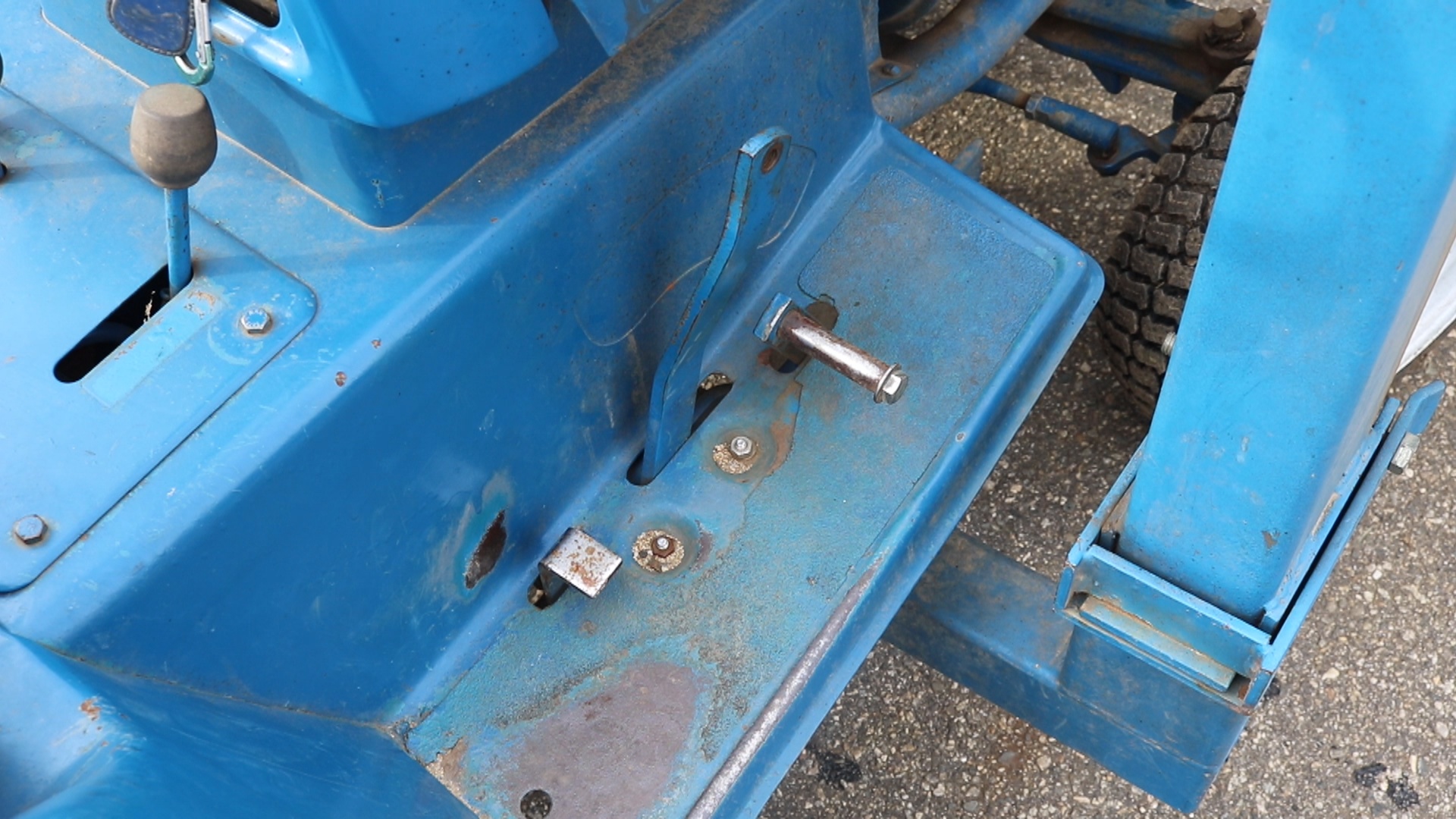
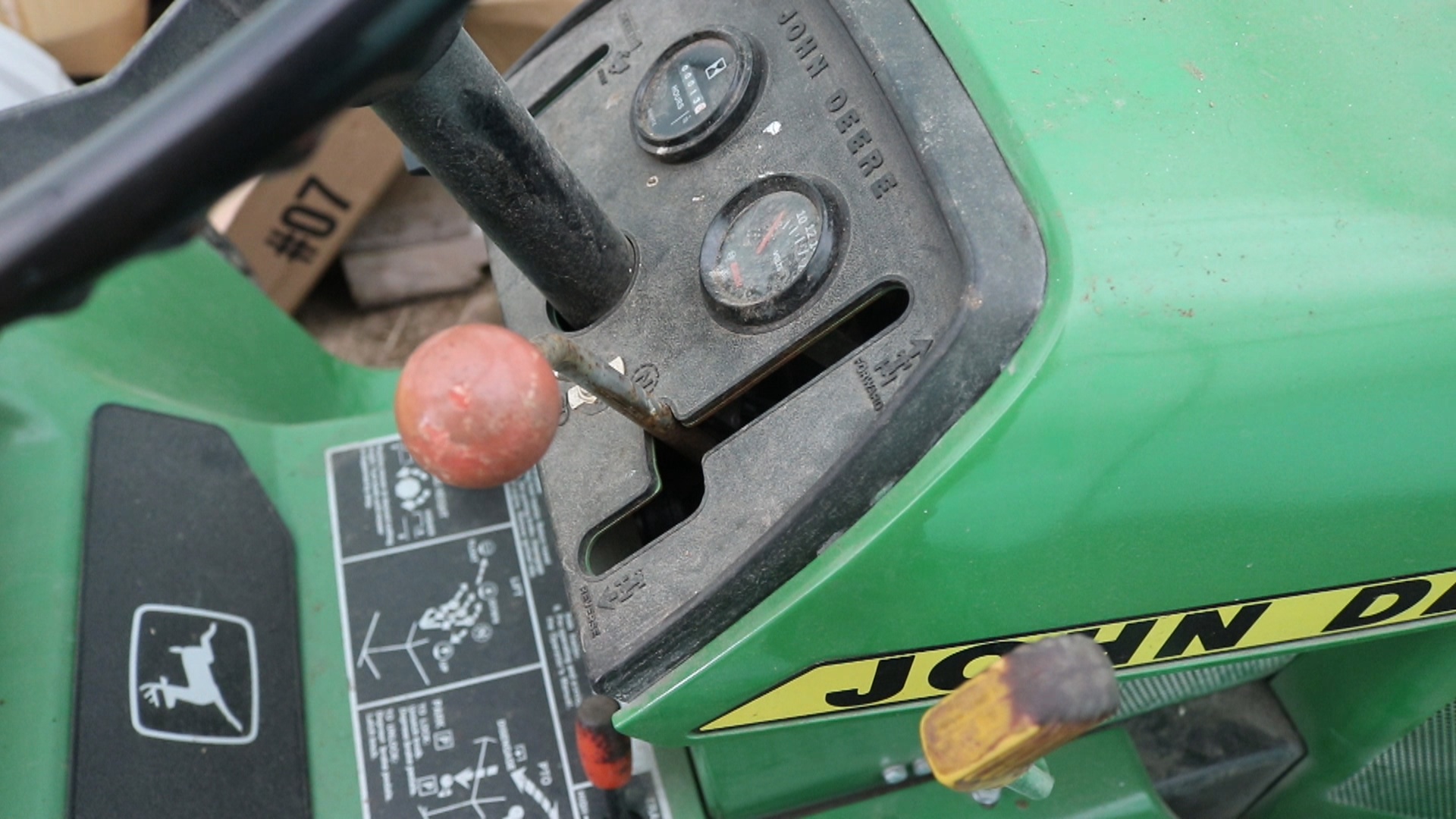
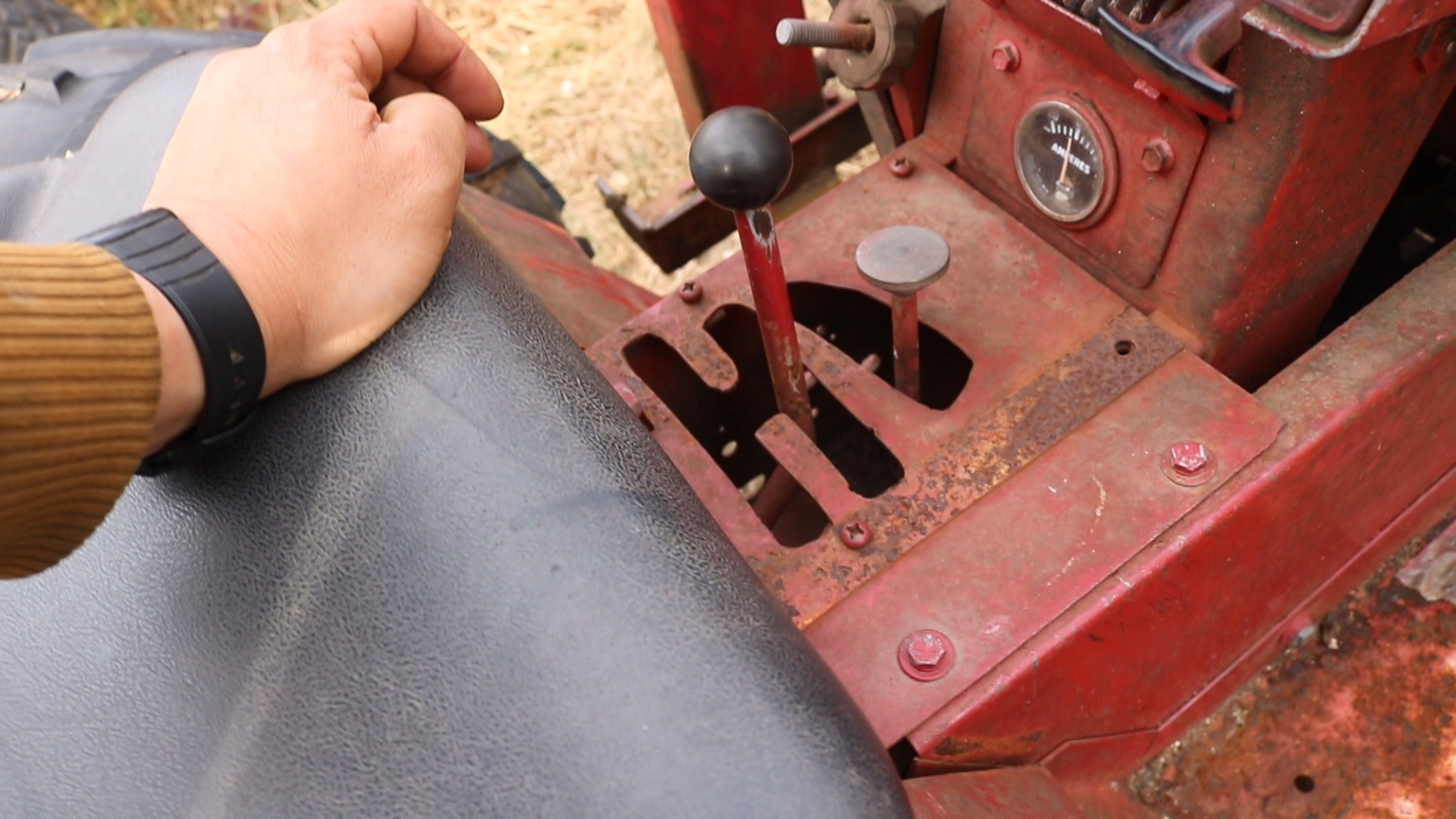
Foot Control Hydro Hand Controlled Hydro Mechanical Gear
Operator Station
I would recommend using a “Full Size” garden tractor from the 1970’s or later. The tractors from this decade were larger and more comfortable than their 1960’s counterparts. Tractors such as the Cub Cadet Wide Frame, Ford LGT, Wheel Horse 300 series, Bolens Large Frames, Allis Chalmers 700 series, etc are examples of a good sized machine. WIth these machines you can mount the Front End Loader and have plenty of room to climb on and off the machine, and be able to sit comfortably even with large work boots and big coats on.
The smaller earlier tractors such as the John Deere 110, Cub Cadet Original, Allis Chalmers B1, Ford 120 could also accept a front loader, but space and comfort for the operator will need to be compromised.
The larger “Super Garden Tractors” provide even more space for the operator. Examples of super garden tractors would be the Ford LGT 195, John Deere 400, 425, 445, 455, Allis Chalmers 616, 620, Simplicity Powermax, Ingersoll 4118 and 4020 tractors.
So these are 4 things to consider when choosing an old vintage garden tractor to mount a front end loader onto. The front wheel spindles, tractor frame, transmission, and operator station can all affect the performance and comfort of your garden tractor loader.
I purposely did not go into discussing rear ends, steering, and brakes. All true garden tractors will be adequate in these areas, and it will just come down to preference. Power steering is a nice luxury but not necessary for a garden tractor loader.
I hope this helps you choose a vintage garden tractor that’s right for your loader project.
Thank you for saving the tractors,
- Norman, iSaveTractors
Recent Posts
-
A Letter From the Owner of iSaveTractors
Dear Friends and Fellow Tractor Enthusiasts, After over a decade of serving the vintage small engine …Jun 5th 2025 -
Rebuild your Old Kohler K Series Engine vs Buying New
Why Rebuilding Your Old Kohler K-Series Engine Beats Buying a New Mower or Engine In today’s throwaw …May 13th 2025 -
iSaveTractors vs Cheap Parts from Amazon
Why iSaveTractors Parts Outshine the Cheap Alternatives on Amazon When it comes to restoring and mai …May 12th 2025

